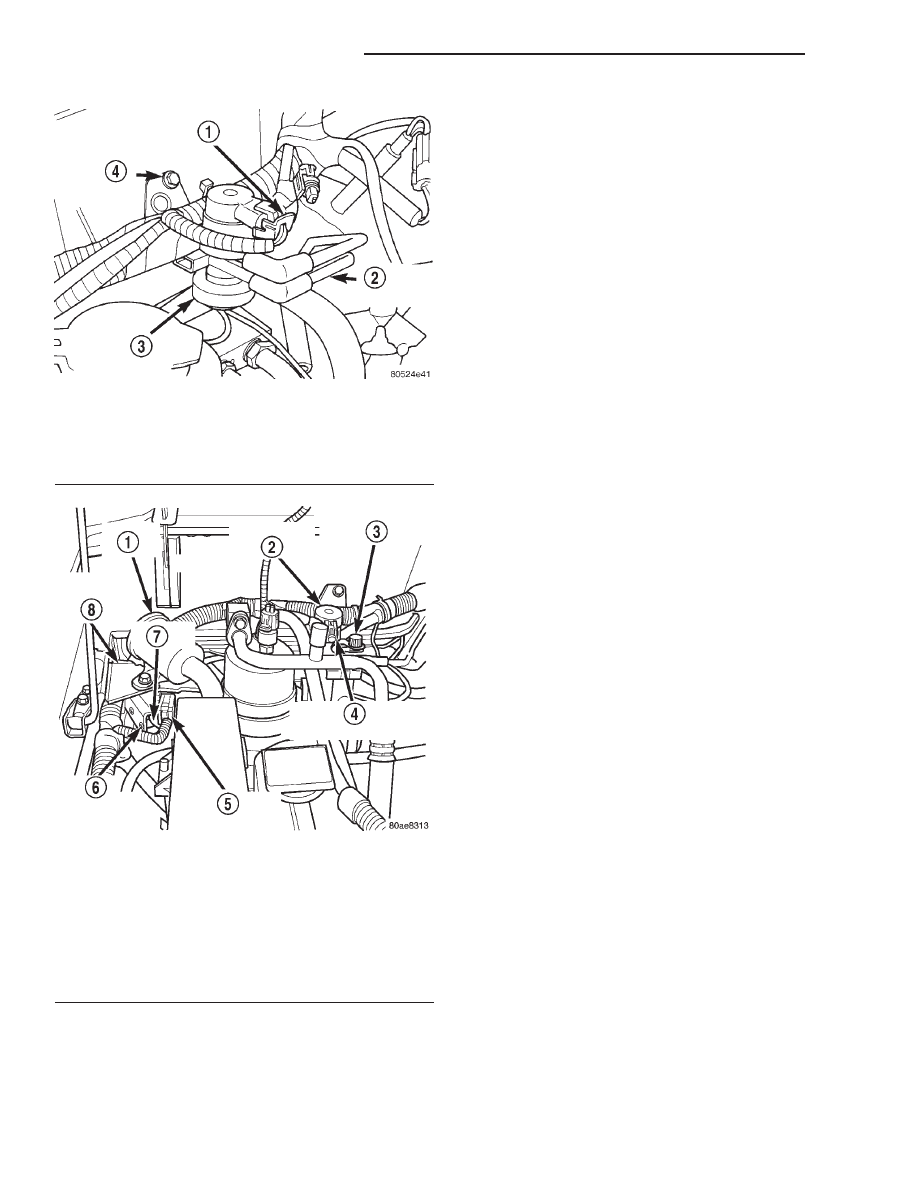Jeep XJ. Manual - part 528

LEAK DETECTION PUMP (LDP)
The LDP is located in the right-rear side of engine
compartment (Fig. 9). The LDP filter is located above
the LDP (Fig. 9). The LDP and LDP filter are
replaced (serviced) as one unit.
REMOVAL
(1) Carefully remove hose at LDP filter.
(2) Remove LDP filter mounting bolt and remove
from vehicle.
(3) Carefully remove vapor/vacuum lines at LDP.
(4) Disconnect electrical connector at LDP.
(5) Remove 2 LDP mounting screws (Fig. 9) and
remove from vehicle.
INSTALLATION
(1) Install LDP to mounting bracket. Tighten
screws to 1 N·m (11 in. lbs.) torque.
(2) Install LDP filter to mounting bracket. Tighten
bolt to 7 N·m (65 in. lbs.) torque.
(3) Carefully install vapor/vacuum lines to LDP,
and install hose to LDP filter. The vapor/vacuum
lines and hoses must be firmly connected.
Check the vapor/vacuum lines at the LDP, LDP
filter and EVAP canister purge solenoid for
damage or leaks. If a leak is present, a Diagnos-
tic Trouble Code (DTC) may be set.
(4) Connect electrical connector to LDP.
SPECIFICATIONS
TORQUE CHART
Description
Torque
EVAP Canister Mounting Nuts (canister-to-
mounting bracket) . . . . . . . . . 5 N·m (45 in. lbs.)
EVAP Canister Mounting Bracket Nuts (mounting
bracket-to-body) . . . . . . . . . . 43 N·m (32 in. lbs.)
EVAP Canister Purge Solenoid Bracket-to-Body
Mounting Bolt . . . . . . . . . . . . 5 N·m (45 in. lbs.)
LDP Mounting Screws . . . . . . . . 1 N·m (11 in. lbs.)
Fig. 8 EVAP Canister Purge Solenoid (Without LDP)
1 – ELECTRICAL CONNECTOR
2 – VACUUM HARNESS
3 – PURGE SOLENOID
4 – MOUNTING BOLT
Fig. 9 EVAP Canister Purge Solenoid (With LDP)
1 – LDP FILTER
2 – EVAP SOLENOID
3 – EVAP SYSTEM TEST PORT
4 – EVAP SOLENOID ELEC. CONNECTOR
5 – LDP ELEC. CONNECTOR
6 – LDP MOUNTING SCREWS (2)
7 – LDP
8 – LDP MOUNTING BRACKET
25 - 28
EMISSION CONTROL SYSTEMS
XJ
REMOVAL AND INSTALLATION (Continued)